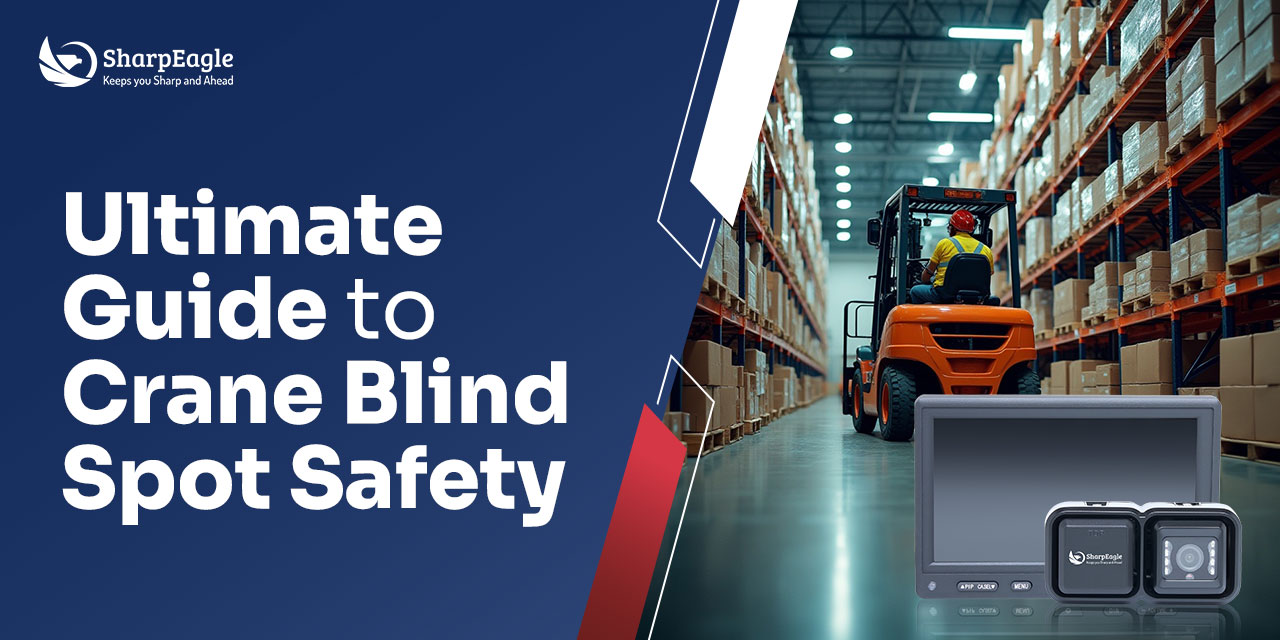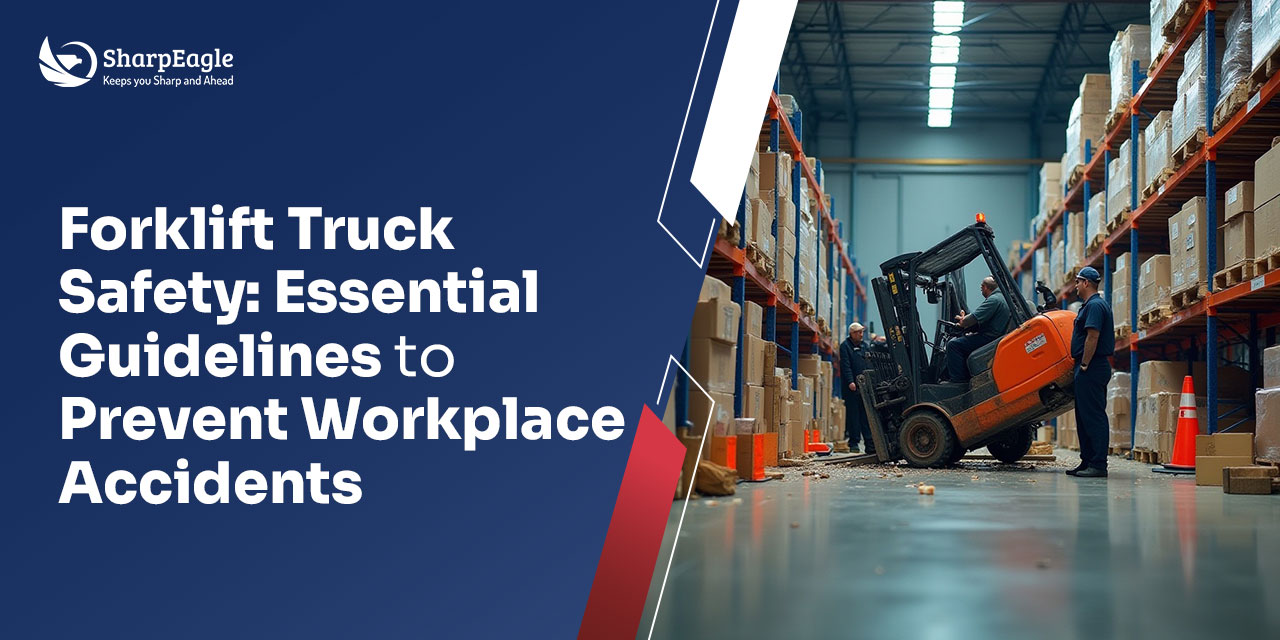

Forklifts are essential in industries like logistics, warehousing, and manufacturing. However, they also pose significant safety risks. In 2021-2022, there were 40,513 forklift-related incidents, resulting in 143 fatalities (70 in 2021 and 73 in 2022) and approximately 24,960 non-fatal injuries. Forklift overturning remains the leading cause of serious injuries, accounting for about 25% of accidents. These forklift accident statistics highlight how poor visibility, blind spots, and human error contribute to the high number of incidents. forklift-related incidents, resulting in 143 fatalities (70 in 2021 and 73 in 2022) and approximately 24,960 non-fatal injuries. Forklift overturning remains the leading cause of serious injuries, accounting for about 25% of accidents. These forklift accident statistics highlight how poor visibility, blind spots, and human error contribute to the high number of incidents.
From busy warehouses in Manchester to logistic hubs in Dubai and industrial yards in Riyadh, forklift-related accidents remain a serious concern. Forklift camera systems are more than helpful tools they enhance driver visibility, reduce blind spots, improve reaction times, and help maintain safety compliance across different regions. Implementing them effectively can mean fewer accidents, lower costs, and a safer workplace.
By addressing these challenges, forklift camera systems have emerged as a game-changer in promoting safety, providing operators with improved line of sight, and helping prevent accidents. In this post, we’ll explore the importance of these systems, the advanced technology they use, and how they contribute to a safer work environment.

Forklift cameras are advanced security systems designed to provide operators with enhanced visibility around their forklifts, eliminating blind spots and improving safety. These cameras are typically mounted on different parts of the forklift, such as the rear, front, or mast, and provide real-time video feeds to the operator via a monitor. This enables the operator to have a clear view of their surroundings without the need for constant head-turning or reliance on mirrors.
Forklift camera systems are particularly useful in high-risk environments where visibility is limited or where precision is critical. They can also be integrated with forklift computer systems and alarms to offer a complete safety solution by alerting the operator when obstacles are detected.

Forklift cameras can be used across a wide range of industries where forklifts are essential for operations:
Forklift cameras are a versatile solution that can be applied in any industry where safety, efficiency, and precision in material handling are indispensable.
A significant number of forklift accidents can be attributed to human error, whether from misjudging distances or not noticing obstacles. Forklift cameras provide constant visual feedback, helping operators make better decisions on the go. According to forklift safety statistics, improved visibility can significantly reduce the number of errors by the operator, resulting in fewer forklift accident reports and enhancing overall safety.
Forklift camera systems also offer real-time monitoring, which allows operators to instantly react to hazards or changing conditions. This capability can be the difference between a near-miss and a severe accident, especially in fast-paced environments like warehouses or construction sites. Operators can quickly respond to any sudden obstacles or pedestrians that enter their path, avoiding a crashed forklift or pedestrian injury.
• Better visibility in narrow warehouse aisles and high racks to prevent collisions.
• Low-light camera systems for night shifts or dark corners.
• Reduced operator fatigue thanks to ergonomic camera placement.
• Camera systems in large logistics centres help avoid collisions with other vehicles or people in busy yards.
• Helps with safety in outdoor yards where glare, dust or harsh sun reduce driver visibility.
• Supports compliance to regional EHS requirements and lowers risk.
• In petrochemical yards and industrial storage zones, cameras help avoid damage and accidents near hazardous materials.
• Use of robust, environment-proof cameras for dusty, hot conditions.
• Enhanced monitoring & real-time alerts helps reduce repair costs and downtime.
Forklift camera systems have become a critical tool in improving workplace safety and reducing accidents. By enhancing forklift visibility, eliminating blind spots, and providing real-time monitoring, these systems prevent accidents and reduce the risks associated with forklift operation.
In addition, integrating these camera systems with a forklift security system can further enhance safety by ensuring that only trained operators have access to equipment, thus preventing unauthorised use or industry malpractices.
Forklift cameras are an essential investment for any organisation prioritising safety and efficiency. SharpEagle is your end-to-end safety consultant for forklift surveillance solutions, offering cutting-edge technology to enhance operator safety and efficiency. With our comprehensive range of forklift camera systems, we ensure your operations run smoothly and safely. Visit our website or book a free consultation call with our experts today for customised recommendations of our forklift surveillance solutions that meet your specific needs and improve workplace safety.
Q1: What certifications are required for installing forklift camera systems in hazardous zones (UK / Saudi / UAE)?
If the camera system is in a hazardous/explosive atmosphere, ATEX / IECEx certification is needed. In the UK, adherence to HSE/PuWER/DSEAR; in Saudi, SASO/SABER; in UAE, GSO/ESMA or local EHS rules.
Q2: Can forklift camera systems help reduce incidents caused by operator blind spots?
Yes, they provide wide-angle or rear/mast-mounted views, eliminating many blind spots that mirrors can’t cover, lowering the risk of collisions and injuries.
Q3: Are forklift camera systems useful in outdoor settings or harsh environments?
Definitely. Heavy-duty models with IP rating, strong enclosure, heat/dust resistance can work well in outdoor yards, deserts, or exposed industrial sites (common in UAE & Saudi).
Q4:What is the ROI of using a camera system on forklifts?
Reduced accidents, fewer damages, less downtime, lower worker compensation claims, better productivity. Many operations see costs saved outweighing installation costs within months.




